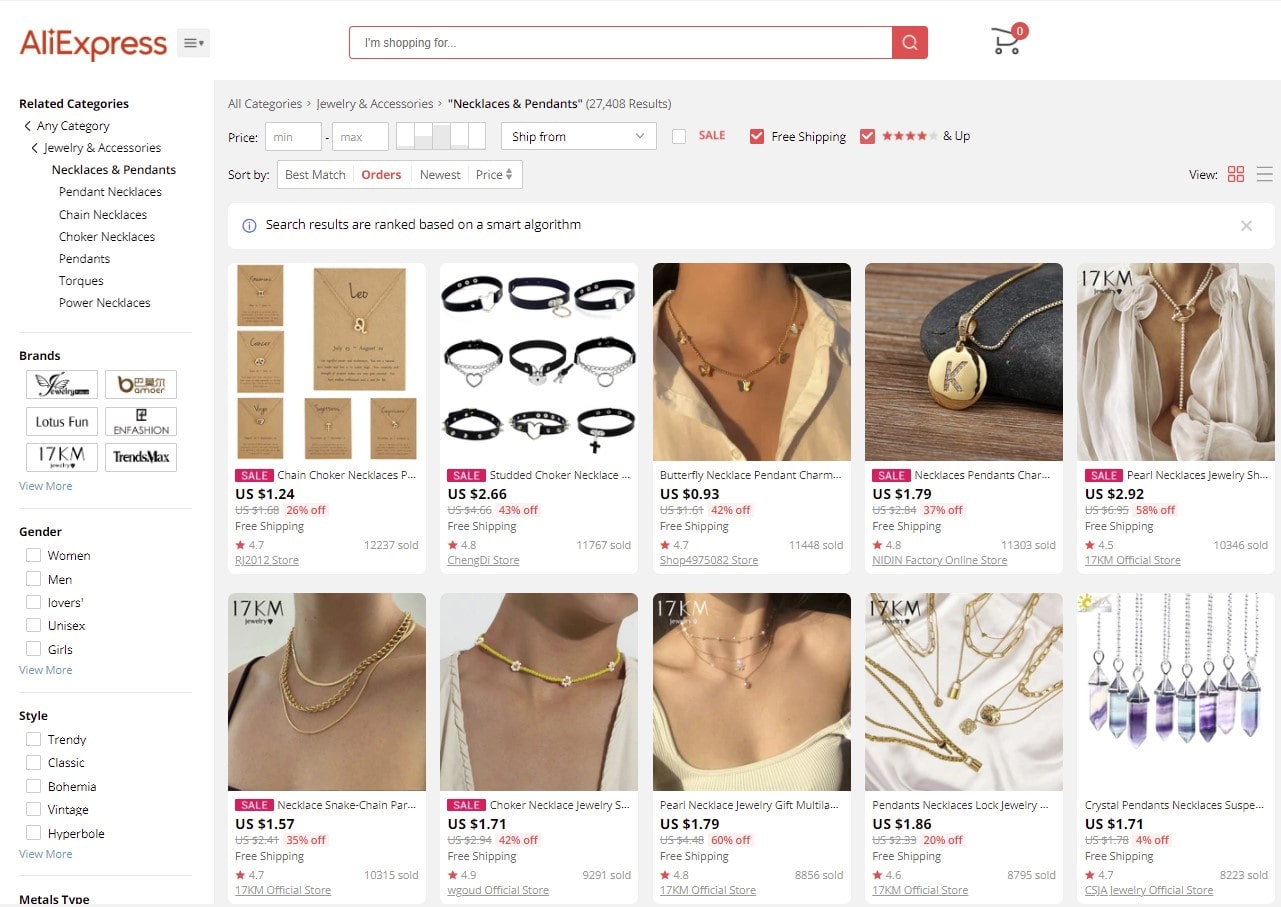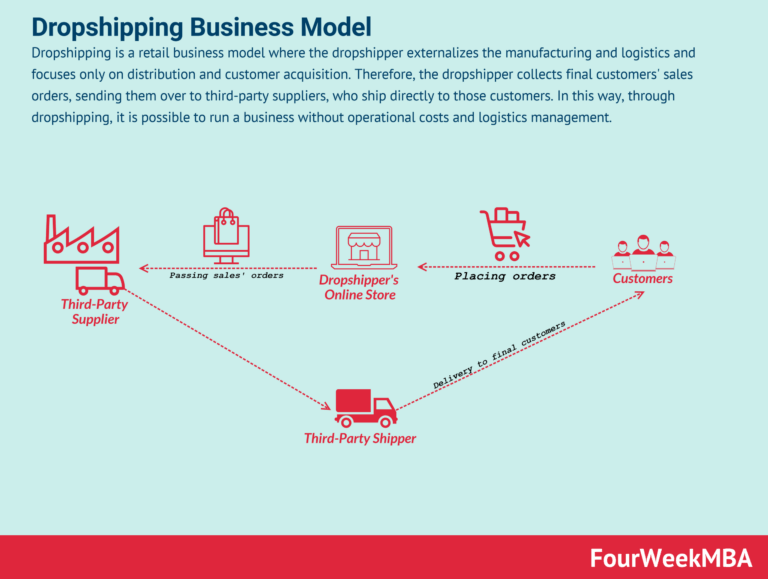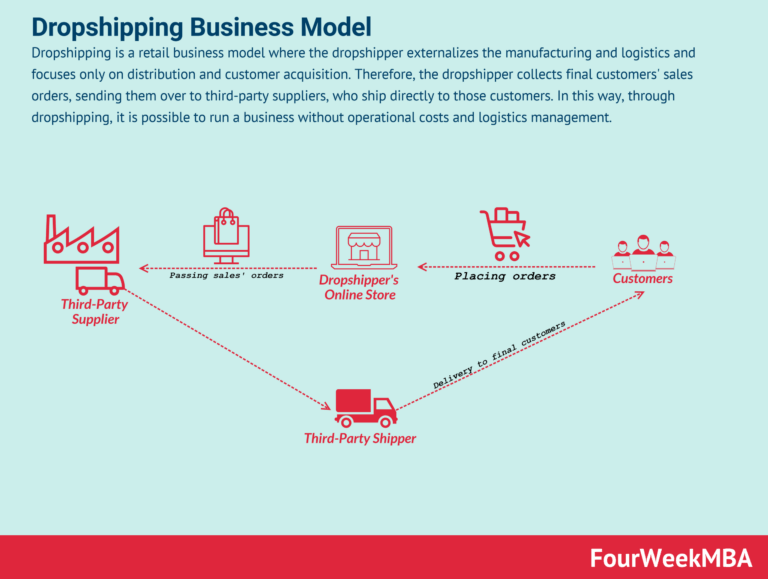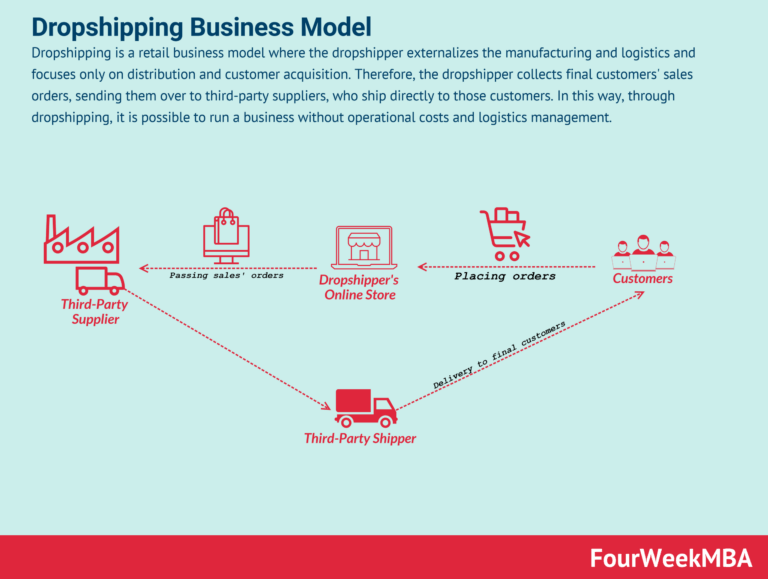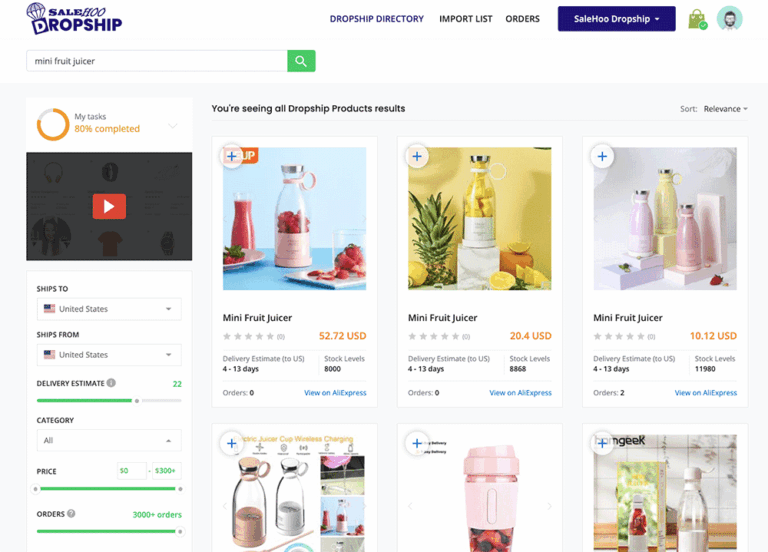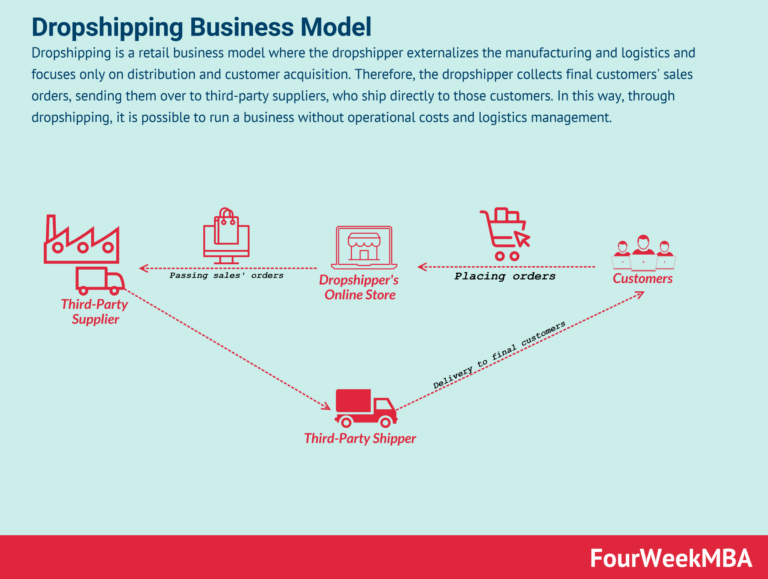What Is Dropshipping and How Does It Work? (2025)
Your Complete Guide to dropshipping jewellery
Introduction to Dropshipping Jewelry
Congratulations on taking the first step toward becoming an entrepreneur! If you’re reading this, you likely have the ambition to start your own business and carve out your niche in the world of e-commerce. One of the most exciting and accessible paths you can pursue is dropshipping jewelry—a model that allows you to sell beautiful pieces without the hassle of inventory management or upfront costs.
So, what exactly is dropshipping? In its simplest form, dropshipping is a retail fulfillment method where you, as the seller, don’t hold any inventory. Instead, when a customer purchases a product from your online store, you forward the order to a third-party supplier who then ships the product directly to the customer. This means you can focus on marketing and customer service while leaving the logistics to someone else. The appeal of dropshipping lies in its low startup costs and flexibility; you only pay for the products after you make a sale, which significantly reduces your financial risk.
In this comprehensive guide, we will take you through every step of starting your own jewelry dropshipping business. You will learn how to identify your niche—whether it’s elegant fine jewelry, trendy costume pieces, or handmade artisan creations. We’ll guide you through researching and selecting reliable suppliers, building your e-commerce website, and effectively marketing your products to reach your target audience. By the end of this guide, you will have a complete roadmap to take your business from concept to launch, and even make your first sale.
Every successful entrepreneur started somewhere, and your journey begins now. While the road ahead may have its challenges, remember that each step you take brings you closer to turning your entrepreneurial dream into a reality. The jewelry industry is thriving, and with the right strategy, you can tap into this lucrative market. So, let’s get started on this exciting venture together!
What You’ll Learn In This Guide
- Your Complete Guide to dropshipping jewellery
- How Does Dropshipping Actually Work? A Step-by-Step Breakdown
- The Pros and Cons of Dropshipping: Is It Right for You?
- Step 1: Finding a Profitable Niche and Winning Products
- Step 2: Choosing the Right Dropshipping Suppliers
- Step 3: Building Your Online Store
- Step 4: Marketing Your Dropshipping Business to Get Sales
- Common Mistakes to Avoid as a Beginner
- Frequently Asked Questions (FAQs) about dropshipping jewellery
- Conclusion: Your Next Steps to Launching Your Business
- Important Disclaimer
How Does Dropshipping Actually Work? A Step-by-Step Breakdown
Understanding the Dropshipping Process
Starting a dropshipping jewelry business can seem daunting, but once you break it down into manageable steps, it becomes much more straightforward. Here’s a clear step-by-step guide to help you understand how the dropshipping model works, specifically in the context of selling jewelry.
1. Customer Places an Order on Your Online Store
The journey begins when a customer visits your e-commerce site and finds a piece of jewelry they love. They select the item, add it to their cart, and proceed to checkout. This is where you, as the entrepreneur, provide a seamless shopping experience. Your online store acts as the digital storefront, showcasing your curated collection of jewelry.
2. You Receive the Payment
Once the customer completes their purchase, the payment is processed through your e-commerce platform (like Shopify). At this point, the customer pays you the retail price you’ve set for the jewelry. This is your moment of success; you’ve made a sale without needing to hold any inventory. It’s akin to running a restaurant where customers pay upfront for meals you don’t have to prepare yourself.
3. You Forward the Order to Your Supplier
After receiving the payment, your next step is to fulfill the order. This involves forwarding the customer’s order details to your dropshipping supplier. This can often be done with just a few clicks if you’re using an integrated dropshipping app. You provide the supplier with the necessary information, including the product details and the shipping address of your customer. In this process, you act as the middleman—similar to a travel agent who books flights and accommodations without ever owning a plane or hotel.
4. The Supplier Ships the Product Directly to the Customer
Once your supplier receives the order, they handle the logistics. They pick, pack, and ship the jewelry directly to your customer. As the store owner, you don’t have to worry about inventory, packaging, or shipping costs. The supplier takes care of all that on your behalf. This step is crucial because it allows you to focus on marketing and customer service instead of logistics.
The Flow of Money and Goods
In a typical dropshipping transaction, the flow of money and goods is as follows:
- Customer Payment: The customer pays you the retail price.
- Your Payment to Supplier: After receiving the order, you pay your supplier the wholesale price for the product, which is usually lower than the retail price you charged the customer.
- Profit Margin: The difference between the retail price you charged and the wholesale price you paid to the supplier is your profit. For example, if you sell a necklace for $50 and your supplier charges you $30, your profit is $20.
The Analogy of a Digital Storefront
Think of yourself as a digital storefront in a bustling marketplace. You don’t own the products on your shelves; instead, you showcase items from various suppliers. When a customer makes a purchase, you simply connect them with the supplier who actually has the product. This model allows you to offer a wide range of jewelry without the financial burden of maintaining inventory.
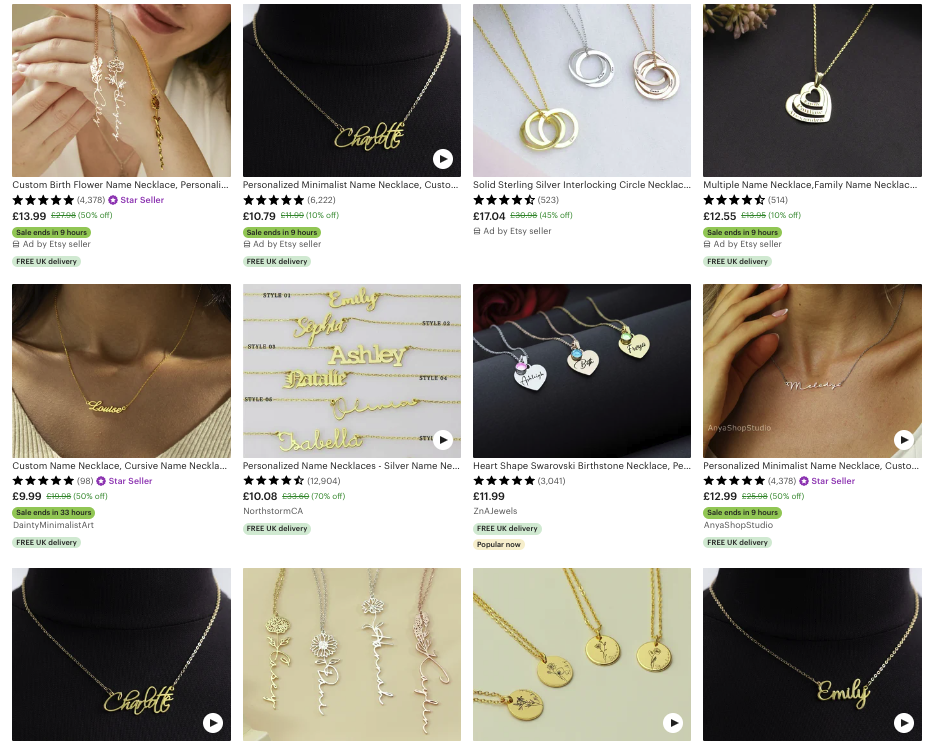
Conclusion
By understanding these steps, you can confidently navigate the dropshipping model and focus on what truly matters: building your brand, marketing your products, and providing excellent customer service. Remember, dropshipping jewelry is not just about selling; it’s about creating a unique shopping experience that resonates with your audience. With diligence and strategic planning, you can turn your jewelry dropshipping venture into a successful online business.
The Pros and Cons of Dropshipping: Is It Right for You?
Advantages of Dropshipping (Pros) | Challenges of Dropshipping (Cons)
|—————————————–|——————————————–|
| Low Startup Costs | Low Profit Margins |
| Start selling without the need for upfront inventory purchases, making it accessible for new entrepreneurs. | The typical profit margin for dropshipping can be lower compared to traditional retail, often between 10-30%. |
| Wide Product Selection | High Competition |
| Easily curate a diverse range of jewelry items from multiple suppliers, appealing to various customer segments. | The dropshipping model has become popular, leading to a saturated market where standing out is challenging. |
| Trend Agility | Finding Reliable Suppliers |
| Quickly adapt to changing market trends without the burden of unsold inventory. | Sourcing dependable suppliers can be difficult, risking the quality and reliability of your products. |
| Easy-to-Ship Products | Limited Customization Options |
| Jewelry’s small size makes shipping manageable and often cost-effective, allowing for potential free shipping offers. | Personalization options are limited, which can deter customers looking for unique, customized pieces. |
| No Inventory Management | Longer Shipping Times |
| Suppliers handle storage and shipping, freeing you from the complexities of inventory management. | Many dropshipping suppliers are overseas, leading to potential delays in shipping times that can frustrate customers. |
| Flexibility in Business Model | Customer Service Challenges |
| The ability to pivot your business model and product offerings based on market demand and customer feedback. | As the retailer, you’re responsible for customer service issues, even if they’re caused by supplier errors. |
| Marketing Opportunities | Brand Identity Issues |
| Focus on building your brand and marketing strategy without the overhead of inventory costs. | Competing on brand identity can be tough when products are sourced from the same suppliers as competitors. |
Exploring the Advantages of Dropshipping
One of the most compelling advantages of dropshipping is its low startup cost. Unlike traditional retail models that require significant investment in inventory, dropshipping allows you to set up an online store with minimal financial risk. You only pay suppliers after you make a sale, which means you can start your jewelry business without the burden of purchasing inventory upfront. This financial flexibility is particularly beneficial for aspiring entrepreneurs and beginners who may not have a lot of capital to invest.
Another key benefit is the wide product selection available to dropshippers. By partnering with multiple suppliers, you can curate a diverse range of jewelry styles and materials to attract different customer demographics. This ability to offer a variety of products not only enhances your store’s appeal but also allows you to respond to market trends quickly—an advantage known as trend agility. When a new style emerges, you can easily add it to your inventory without the risk of being stuck with unsold products.
Additionally, the easy-to-ship nature of jewelry makes it an ideal product for dropshipping. Jewelry is typically lightweight and compact, resulting in lower shipping costs. This can enable you to offer free shipping, a significant incentive that can help drive sales. Moreover, since you don’t have to manage inventory, you can focus more on your marketing strategies, building a strong online presence, and engaging with your customers.
Addressing the Challenges of Dropshipping
Despite its advantages, dropshipping also presents significant challenges that entrepreneurs should be aware of. One of the primary concerns is low profit margins. While you can sell a wide range of products, the typical profit margin for dropshipping jewelry often falls between 10-30%. This means that to achieve sustainable income, you’ll need to sell a high volume of products or find ways to differentiate your offerings to justify higher prices.
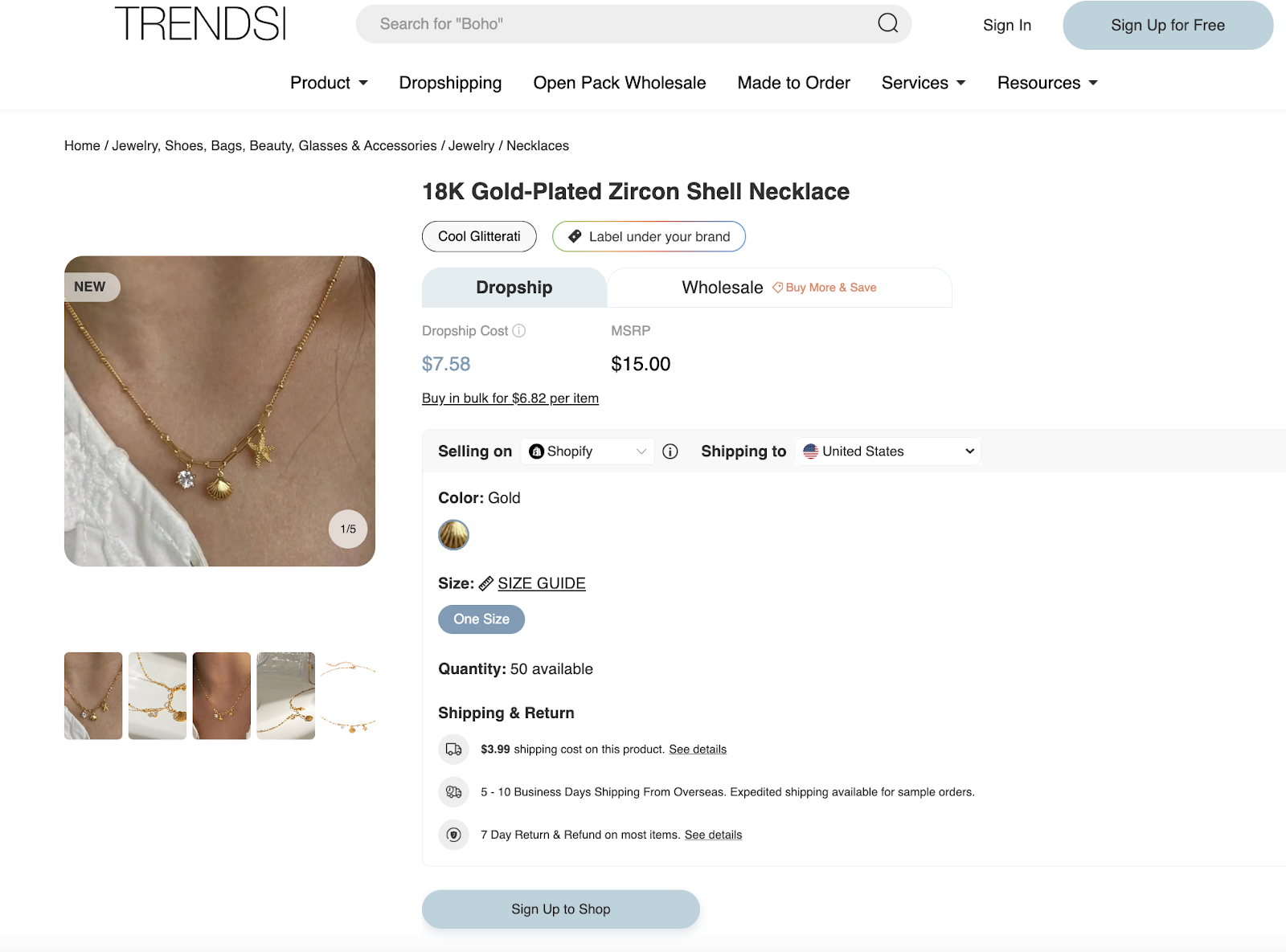
Another challenge is the high competition within the dropshipping space. As this business model has gained popularity, many new entrants have flooded the market, making it increasingly difficult to stand out. To succeed, you’ll need to develop a unique value proposition—whether through exceptional product curation, superior customer service, or innovative marketing strategies.
Additionally, finding reliable suppliers can be a daunting task. It’s crucial to establish partnerships with trustworthy suppliers who can consistently deliver high-quality products. Poor supplier relationships can lead to issues such as low-quality items or delayed shipping, which can harm your business reputation.
Another point to consider is the limited customization options available in dropshipping. Many customers seek personalized jewelry for special occasions, and as a dropshipper, your ability to offer customized products is limited. If customization is a crucial aspect of your target market, you may need to explore alternative business models or incorporate print-on-demand services.
Finally, you should be prepared for longer shipping times, especially if your suppliers are based overseas. This can lead to customer dissatisfaction if not managed properly. Being transparent about shipping times and setting realistic expectations can help mitigate these issues.
Conclusion
In summary, dropshipping jewelry offers a unique blend of advantages and challenges. For aspiring entrepreneurs, it presents a low-risk entry point into the e-commerce world, allowing for flexibility and a wide array of product options. However, it also necessitates a keen understanding of the competitive landscape and a commitment to sourcing reliable suppliers. By weighing these pros and cons carefully, you can determine whether dropshipping is the right path for you and develop a strategy to thrive in this dynamic industry.
Step 1: Finding a Profitable Niche and Winning Products
What Makes a Good Niche?
Finding a profitable niche in the jewelry dropshipping market is crucial for your business’s success. A well-defined niche allows you to target a specific audience, making it easier to tailor your marketing efforts and product offerings. Here are some key characteristics that make a niche lucrative:
-
Passion and Expertise: A niche that aligns with your interests or expertise can provide you with valuable insights and a more authentic connection to your audience. For instance, if you have a passion for vintage jewelry, you can leverage your knowledge to curate a compelling collection.
-
Market Demand: Look for niches that have a proven demand. Tools like Google Trends can help you identify popular search terms related to jewelry. A niche with consistent or growing interest is more likely to yield profits.
-
Low Competition: While competition can be a sign of a profitable market, overly saturated niches can make it challenging to stand out. Seek out areas within the jewelry market that are underserved or have less competition.
-
Target Audience: Define your ideal customer. A niche that caters to a specific demographic, such as eco-conscious consumers or luxury buyers, can enhance your marketing strategy and product selection.
-
Profit Margins: Assess the potential profitability of your niche. Jewelry can range from inexpensive costume pieces to high-end fine jewelry. Ensure that the products you choose to sell allow for healthy profit margins after factoring in supplier costs and shipping.
How to Brainstorm Niche Ideas
Once you understand what makes a good niche, it’s time to brainstorm ideas. Here are some actionable strategies to help you generate niche concepts:
-
Personal Interests and Hobbies: Start by listing your hobbies, interests, and passions. Think about how these can translate into a jewelry niche. For example, if you’re a traveler, consider creating a line of travel-themed jewelry.
-
Market Research: Explore existing jewelry stores on platforms like Etsy, Amazon, and eBay. Identify what types of jewelry are popular and see if there are gaps in the market. You can also look for customer reviews to understand what buyers like or dislike about current offerings.
-
Social Media Exploration: Social media platforms like Instagram and Pinterest are treasure troves for inspiration. Follow jewelry hashtags and influencers to see trending styles and materials. Look for patterns in what users are engaging with.
-
Surveys and Feedback: Engage with potential customers through surveys or social media polls. Ask them about their jewelry preferences, styles, and any unmet needs they might have. This can provide direct insight into what your target market is looking for.
-
Competitor Analysis: Analyze your competitors to identify their strengths and weaknesses. Look for areas where you can differentiate your offerings, whether through unique designs, superior customer service, or a compelling brand story.
Validating Your Niche
Once you’ve brainstormed a list of potential niches, it’s essential to validate your ideas to ensure they are viable. Here’s how you can do that:
-
Keyword Research: Use tools like Google Keyword Planner, Ubersuggest, or Ahrefs to analyze search volume and competition for keywords related to your niche. A good niche should have a decent search volume with manageable competition.
-
Analyze Trends: Utilize Google Trends to see if interest in your niche is increasing, decreasing, or stable over time. Consistent or upward trends are indicators of a good niche.
-
Engage with Communities: Join online forums, Facebook groups, or Reddit communities related to your niche. Observe discussions, ask questions, and gauge interest levels. This can provide qualitative data on the demand for your niche.
-
Test with Minimal Investment: Create a simple landing page or run a small ad campaign to gauge interest in your niche. Measure the response rate and use this data to refine your niche further.
-
Competitor Sales Analysis: Look at your competitors’ sales figures if available. Platforms like Jungle Scout can provide estimates for sales on Amazon, giving you insight into how well similar products are performing.
Methods for Finding Winning Products
Once you’ve defined and validated your niche, the next step is to find winning products that will resonate with your target audience. Here are some effective methods:
-
Supplier Marketplaces: Explore dropshipping supplier platforms like AliExpress, Oberlo, or Spocket. These platforms often provide insights into trending products, including sales data and customer reviews. Look for items with high ratings and positive feedback.
-
Social Media Trends: Monitor social media platforms for trending jewelry styles. Tools like TrendSpottr and BuzzSumo can help you identify viral content. Pay attention to what influencers are wearing and promoting.
-
SEO Tools: Use SEO tools to find products with high search volumes but low competition. This can help you identify items that are in demand but not widely available.
-
Product Criteria: When evaluating products, consider the following criteria:
- Price Point: Aim for products priced between $15 and $50, as they typically have a good balance of affordability for consumers and profitability for you.
- Unique Selling Proposition: Choose products that solve a problem or fulfill a specific need. For example, sweatproof jewelry for athletes or eco-friendly materials for environmentally conscious consumers.
-
Not Easily Found in Stores: Focus on products that are unique or specialized, making them harder to find in brick-and-mortar stores. This can create a sense of exclusivity for your customers.
-
Seasonal and Occasion-Based Products: Consider products that align with seasonal trends or special occasions, such as holiday-themed jewelry or pieces for weddings. This can help you capitalize on timely sales opportunities.
Conclusion
Finding a profitable niche and winning products in the jewelry dropshipping space requires research, creativity, and strategic thinking. By understanding what makes a good niche, brainstorming ideas, validating them, and employing effective product research methods, you can set a strong foundation for your dropshipping business. Remember, the journey is as important as the destination, so stay adaptable and open to learning as you embark on this entrepreneurial adventure!
Step 2: Choosing the Right Dropshipping Suppliers
Understanding Dropshipping Suppliers
When it comes to starting your dropshipping jewelry business, the suppliers you choose can make or break your success. They are the backbone of your operations, handling everything from product quality to shipping times. In this section, we’ll explore some of the most popular dropshipping platforms, along with their pros and cons, to help you make an informed decision.
AliExpress
Overview
AliExpress is a global retail marketplace owned by Alibaba Group. It offers a vast array of products, including jewelry, from numerous suppliers, making it one of the most popular choices for dropshippers.
Pros:
– Wide Selection: AliExpress features an extensive range of jewelry styles, materials, and price points, allowing you to curate a diverse inventory.
– Low Prices: Many suppliers offer competitive wholesale pricing, which can help you maintain healthy profit margins.
– No Upfront Costs: You only pay for the products after you make a sale, which minimizes your financial risk.
– User-Friendly Interface: The platform is easy to navigate, making it simple to find and list products.
Cons:
– Quality Variability: The quality of products can vary significantly between suppliers, so it’s crucial to vet them carefully.
– Long Shipping Times: Many suppliers are based in China, which can lead to longer shipping times, particularly for customers in the U.S. or Europe.
– Limited Customer Support: Since you’re dealing with multiple suppliers, communication can be inconsistent, leading to potential issues with orders.
CJ Dropshipping
Overview
CJ Dropshipping is a popular platform that connects dropshippers with suppliers, offering various services including product sourcing, warehousing, and shipping.
Pros:
– Quality Control: CJ Dropshipping vets its suppliers, ensuring that you receive high-quality products.
– Faster Shipping Options: They have warehouses in various countries, which can significantly reduce shipping times for U.S. customers.
– Customization Services: CJ offers product customization, allowing you to add your branding to certain items.
– Integrated Platform: The platform integrates well with popular e-commerce solutions like Shopify, making it easier to manage your orders.
Cons:
– Higher Costs: While the quality is generally better, the prices may be higher than those on AliExpress.
– Complexity: The platform can be overwhelming for beginners, with many features that may require some time to learn.
– Minimum Order Requirements: Some suppliers on CJ may have minimum order quantities, which can be challenging for new businesses.
USA-Based Suppliers
Overview
Working with USA-based suppliers can offer significant advantages in terms of shipping speed and customer service. These suppliers typically have warehouses in the United States, allowing for faster delivery to American customers.
Pros:
– Faster Shipping: Orders can often be delivered within a few days, improving customer satisfaction and potentially increasing repeat business.
– Better Communication: Working with suppliers in the same time zone can lead to better communication and quicker resolution of issues.
– Higher Quality Control: Suppliers based in the U.S. often adhere to stricter quality standards, reducing the risk of receiving subpar products.
Cons:
– Higher Prices: Products may come at a premium compared to international suppliers, which can reduce your profit margins.
– Limited Product Range: The variety of jewelry available may be smaller compared to platforms like AliExpress.
– Potentially Higher Minimum Orders: Some U.S. suppliers may require larger minimum orders, which can be a barrier for new entrepreneurs.
What to Look for in a Good Supplier
Finding the right supplier is crucial for the success of your dropshipping jewelry business. Here’s a checklist to help you evaluate potential suppliers:
- Communication: Ensure that the supplier is responsive and easy to communicate with. Quick responses to inquiries can save you headaches down the line.
- Shipping Times: Look for suppliers that can offer reasonable shipping times to your target market. Transparency about shipping methods and timelines is key.
- Product Quality: Order samples to check the quality of the jewelry before listing it in your store. Customer satisfaction hinges on the quality of the products you sell.
- Return Policies: Understand the supplier’s return policies to ensure they align with your business model. A customer-friendly return policy can enhance your reputation.
- Reputation and Reviews: Research the supplier’s reputation online. Look for reviews from other dropshippers to gauge their reliability and service quality.
- Pricing and Fees: Be clear on the wholesale prices and any additional fees. This will help you calculate your profit margins accurately.
- Inventory Levels: Ensure that the supplier can maintain inventory levels that meet your demand. A supplier with frequent stockouts can hurt your business.
- Customization Options: If you plan to offer personalized jewelry, check if the supplier can accommodate such requests.
Conclusion
Choosing the right dropshipping suppliers is a critical step in launching your jewelry business. Platforms like AliExpress, CJ Dropshipping, and USA-based suppliers each have their own unique advantages and challenges. By carefully evaluating your options and considering factors such as communication, shipping times, and product quality, you’ll be well on your way to establishing a successful dropshipping venture. Remember, investing time in finding the right supplier can lead to long-term success and customer satisfaction. Happy dropshipping!
Step 3: Building Your Online Store
Getting Started with Your Online Store
Setting up an online store for your dropshipping jewelry business is an exciting step towards entrepreneurship. With platforms like Shopify, you can create a professional-looking store without needing extensive technical skills. In this section, we will walk through the essential steps to build your online store, focusing on Shopify but also mentioning WooCommerce as an alternative for those who may prefer it.
1. Choosing a Plan
The first step to setting up your online store is selecting a Shopify plan that best suits your needs. Shopify offers several pricing tiers, from the basic plan to more advanced options.
- Basic Shopify: Ideal for beginners, this plan includes all the essential features to get started, including unlimited product listings, 24/7 customer support, and access to the Shopify App Store.
- Shopify: This mid-tier plan provides additional features such as professional reports and lower credit card rates.
- Advanced Shopify: Best for growing businesses, this plan offers advanced reporting, third-party calculated shipping rates, and more.
To choose the right plan, consider your expected sales volume, the features you need, and your budget. Shopify also offers a 14-day free trial, allowing you to explore the platform before committing.
2. Picking a Theme
Once you’ve selected your plan, the next step is to choose a theme for your store. Shopify provides a range of customizable themes, many of which are tailored specifically for jewelry and fashion businesses.
- Free Themes: Start with a free theme from Shopify’s theme store. Look for one that highlights product images effectively, as visuals are crucial in the jewelry business.
- Paid Themes: If you want more advanced features or a unique design, consider investing in a paid theme. These often come with additional customization options and better support.
When selecting a theme, ensure it’s mobile-responsive, as a significant portion of online shopping occurs on mobile devices. You can customize the theme later to align with your brand’s aesthetics.
3. Setting Up Essential Pages
Creating essential pages is crucial for building credibility and trust with your customers. Here are the key pages you should include:
- About Us: Share your brand story, mission, and what sets your jewelry apart. This is your chance to connect with your audience on a personal level.
- Contact: Make it easy for customers to reach you. Include a contact form, email address, and any other relevant contact information.
- Policies: Draft clear policies for shipping, returns, and exchanges. Transparency is key in e-commerce, especially in dropshipping, where customers may have concerns about delivery times and product quality.
You can find templates for these pages online, but be sure to customize them to reflect your unique brand voice and values.
4. Installing Key Apps
To optimize your dropshipping business, you’ll want to install several key apps from the Shopify App Store. Here are a few essential apps to consider:
- DSers: This app allows you to import products from suppliers like AliExpress directly into your store. It simplifies order processing and helps manage inventory more efficiently.
- CJ Dropshipping: Another great option, CJ Dropshipping connects you with a wide range of products and offers additional services like branding and warehousing.
- Oberlo: If you’re sourcing from AliExpress, Oberlo is a popular app for importing products and managing orders seamlessly.
To install an app, simply navigate to the Shopify App Store, search for the app you need, and follow the prompts to install it. These tools will save you time and help streamline your operations.
5. Setting Up Payment Gateways
Your store needs to accept payments to complete sales, so setting up payment gateways is essential. Shopify supports various payment options, including:
- Shopify Payments: This is the default payment processor that allows you to accept credit card payments directly. It’s user-friendly and integrates seamlessly with your store.
- PayPal: Offering PayPal as a payment option can increase conversions, as many customers prefer using it for online purchases.
- Alternative Payment Methods: Consider adding options like Apple Pay, Google Pay, or cryptocurrency if your target audience is likely to use them.
To set up payment gateways, go to your Shopify admin panel, navigate to ‘Settings,’ and select ‘Payments.’ Follow the prompts to configure your preferred payment methods.
A Brief Note on WooCommerce
While Shopify is the most popular choice for dropshipping, WooCommerce is a viable alternative for those who prefer WordPress. WooCommerce is a powerful plugin that allows you to turn your WordPress site into a fully functional online store. It offers extensive customization options, but it may require a bit more technical knowledge to set up compared to Shopify.
Conclusion
Building your online dropshipping store on Shopify is an achievable task, even for beginners. By following these steps—choosing a plan, picking a theme, setting up essential pages, installing key apps, and configuring payment gateways—you’ll be well on your way to launching your jewelry business. Remember, the key to success in dropshipping is not just about setting up the store but also about continually optimizing it and providing exceptional customer service. Good luck on your entrepreneurial journey!
Step 4: Marketing Your Dropshipping Business to Get Sales
Social Media Marketing (TikTok & Instagram)
Social media platforms are essential for promoting your dropshipping jewelry business. They allow you to engage with potential customers, showcase your products, and build a community around your brand. Here are some actionable strategies to effectively market your jewelry store on TikTok and Instagram:
- Create Engaging Content
- Product Showcases: Use high-quality visuals and videos to highlight your jewelry pieces. Show them from different angles, and consider using lifestyle shots where models wear the jewelry. Create short, captivating videos that feature your products in action, such as unboxing or styling tips.
-
Behind-the-Scenes: Share behind-the-scenes content to humanize your brand. Show how you select pieces, your design process, or even your packaging. This builds trust and makes your brand relatable.
-
Utilize User-Generated Content (UGC)
- Encourage Customers to Share: Ask your customers to share photos of themselves wearing your jewelry and tag your brand. Feature these posts on your profile to create social proof and engage with your community.
-
Create a Branded Hashtag: Develop a unique hashtag for your brand and encourage customers to use it. This not only helps in tracking UGC but also builds a sense of community.
-
Leverage Influencer Partnerships
- Micro-Influencers: Collaborate with micro-influencers who resonate with your target audience. They often have higher engagement rates and can authentically promote your products. Offer them free products in exchange for reviews or features.
-
Influencer Takeovers: Allow influencers to take over your social media for a day. They can showcase how they style your jewelry, providing exposure to their followers and enhancing your brand’s visibility.
-
Engagement and Community Building
- Host Giveaways: Run contests or giveaways to boost engagement. For example, ask participants to follow your account, like a post, and tag friends to enter. This can increase your reach significantly.
-
Live Sessions: Host live sessions to showcase new arrivals, share styling tips, or answer customer questions. This interactive approach can help create a personal connection with your audience.
-
Utilize Stories and Reels
- Instagram Stories: Use Stories to share flash sales, polls, or sneak peeks of upcoming products. This feature is great for creating a sense of urgency and keeping your audience engaged.
- TikTok Trends: Stay on top of TikTok trends and challenges. Participate in relevant trends that can feature your jewelry creatively, helping you gain visibility on the platform.
Paid Advertising (Facebook/Instagram Ads)
Paid advertising can significantly amplify your reach and target specific demographics effectively. Here are steps to create successful ad campaigns for your dropshipping jewelry business:
- Define Your Audience
- Targeting Options: Use Facebook’s detailed targeting options to reach your ideal customers. You can target based on interests, demographics, behaviors, and even lookalike audiences that resemble your existing customers.
-
Create Buyer Personas: Develop detailed buyer personas to understand who your customers are. This will help you tailor your ads to resonate with their interests and needs.
-
Create Eye-Catching Visuals
- High-Quality Images and Videos: Use visually appealing images and videos that highlight your jewelry. Ensure that your visuals are consistent with your brand’s aesthetic.
-
Carousel Ads: Utilize carousel ads to showcase multiple products in a single ad. This can encourage users to swipe through your offerings and increases the chances of engagement.
-
Craft Compelling Copy
- Clear Call-to-Action (CTA): Include strong CTAs in your ad copy, such as “Shop Now,” “Discover More,” or “Limited Time Offer.” This encourages users to take immediate action.
-
Highlight Unique Selling Points: Emphasize what makes your jewelry unique, whether it’s craftsmanship, materials, or design. Make sure your copy speaks to the benefits your products offer.
-
Test and Optimize
- A/B Testing: Run A/B tests on different ad formats, headlines, and visuals to see what resonates best with your audience. This will help you optimize your ad spend for maximum ROI.
-
Monitor Analytics: Keep an eye on your ad performance metrics. Adjust your targeting, visuals, or copy based on what the data tells you about customer engagement.
-
Retargeting Campaigns
- Retarget Visitors: Set up retargeting campaigns to reach users who have visited your site but didn’t make a purchase. Remind them of the products they viewed to encourage them to return and complete their purchase.
- Dynamic Ads: Use dynamic ads to show users the specific products they’ve viewed on your site. This personalized approach can significantly increase conversion rates.
Search Engine Optimization (SEO)
SEO is crucial for driving organic traffic to your dropshipping jewelry store. By optimizing your site, you can improve your search engine rankings and attract potential customers. Here are key strategies to implement:
- Keyword Research
- Identify Keywords: Use tools like Google Keyword Planner or Ubersuggest to find keywords related to your jewelry niche. Look for terms that have a good search volume but are not overly competitive.
-
Long-Tail Keywords: Focus on long-tail keywords (e.g., “handmade silver earrings”) as they are often less competitive and more specific to what your customers might be searching for.
-
Optimize Product Pages
- Unique Descriptions: Write unique, detailed product descriptions that incorporate your target keywords. Avoid using manufacturer descriptions, as they can harm your SEO efforts.
-
Alt Text for Images: Ensure all images have descriptive alt text that includes relevant keywords. This helps search engines understand your content and improves accessibility.
-
Content Marketing
- Start a Blog: Create a blog on your website where you can share articles about jewelry trends, styling tips, or care guides. This not only positions you as an authority but also provides more content for search engines to index.
-
Use Internal Linking: Link to your product pages within your blog posts to guide readers toward your offerings. This helps with SEO and keeps visitors on your site longer.
-
Local SEO
- Google My Business: If you have a local presence, set up a Google My Business account. This can help you appear in local searches and attract nearby customers.
-
Local Keywords: Incorporate local keywords in your content, such as “jewelry store in [Your City].” This can help you attract customers in your area.
-
Mobile Optimization
- Responsive Design: Ensure your website is mobile-friendly. A significant portion of online shopping is done via mobile devices, and a responsive design can improve user experience and SEO rankings.
- Page Speed: Optimize your site’s loading speed, as slow sites can negatively impact user experience and search rankings. Use tools like Google PageSpeed Insights to test and improve your site’s performance.
Email Marketing
Email marketing is a powerful tool for nurturing relationships with your customers and driving repeat sales. Here’s how to effectively implement an email marketing strategy for your dropshipping jewelry business:
- Build Your Email List
- Sign-Up Incentives: Offer incentives for visitors to join your email list, such as discounts on their first purchase or exclusive access to new collections.
-
Pop-Up Forms: Use pop-up forms on your website to capture email addresses. Ensure the forms are visually appealing and easy to complete.
-
Segment Your Audience
- Targeted Campaigns: Segment your email list based on customer behavior, such as purchase history or engagement level. This allows you to send more personalized and relevant emails.
-
Abandoned Cart Emails: Set up automated emails to remind customers about items left in their cart. Include images of the products and a direct link to return to their cart.
-
Craft Compelling Content
- Engaging Subject Lines: Write catchy subject lines that grab attention and encourage opens. Experiment with different styles, such as questions or exclusive offers.
-
High-Quality Visuals: Use high-quality images of your jewelry in your emails. Ensure your email design is visually appealing and reflects your brand identity.
-
Automated Campaigns
- Welcome Series: Create a welcome email series for new subscribers. Introduce your brand, share your story, and highlight your best-selling products.
-
Seasonal Promotions: Plan automated email campaigns around holidays or special occasions (e.g., Valentine’s Day, Mother’s Day). Promote relevant products and offer special discounts.
-
Analyze and Improve
- Monitor Metrics: Regularly track metrics such as open rates, click-through rates, and conversion rates. Use this data to refine your email marketing strategy.
- A/B Testing: Experiment with different email layouts, content, and CTAs to see what resonates best with your audience. Adjust your strategy based on the results.
By implementing these marketing strategies, you can effectively promote your dropshipping jewelry business, engage with your audience, and ultimately drive sales. Remember, consistency is key, and adapting your approach based on feedback and data will help you succeed in the competitive world of e-commerce.
Common Mistakes to Avoid as a Beginner
1. Choosing a Bad Niche
One of the most significant mistakes beginners make is selecting a niche that is either too broad or overly saturated. A poorly defined niche can lead to fierce competition and make it difficult to establish a unique brand identity.
Solution: Conduct thorough market research before settling on your niche. Analyze trends, customer preferences, and competitor offerings. Aim for a niche that aligns with your interests and expertise but is also underserved in the market. For example, instead of selling generic jewelry, consider focusing on a specific style, such as eco-friendly pieces or handcrafted artisan jewelry.
2. Not Testing Products
Many newcomers jump into selling products without testing their quality. This can lead to unsatisfied customers, negative reviews, and ultimately, a tarnished reputation.
Solution: Order samples of the products you plan to sell. Assess their quality, durability, and appeal. This will not only help you ensure you’re offering a good product but also provide you with authentic photos for your store and marketing materials. Customers appreciate genuine product images and descriptions, which can enhance trust.
3. Poor Customer Service
Customer service can make or break your dropshipping business. Beginners often underestimate its importance, leading to lost sales and damaged relationships.
Solution: Develop a robust customer service strategy from the start. This includes clear communication, prompt responses to inquiries, and an easy return policy. Utilize tools like chatbots for immediate responses and set up email templates to handle common questions efficiently. Remember, happy customers are likely to return and refer others.
4. Ignoring Shipping Times
Long shipping times can frustrate customers and lead to abandoned carts. Many beginners fail to account for the shipping durations associated with their suppliers, especially if they are overseas.
Solution: Be transparent about shipping times on your product pages. Offer estimated delivery dates and set realistic expectations. If possible, partner with suppliers that can provide faster shipping options. Consider integrating a shipping calculator on your website to give customers a clear idea of when they can expect their orders.
5. Unrealistic Profit Expectations
Many aspiring entrepreneurs enter dropshipping with the belief that they can make significant profits quickly. This misconception can lead to disappointment and frustration.
Solution: Set realistic financial goals based on market research and competitor pricing. Understand your costs, including product prices, shipping fees, and marketing expenses, to determine your profit margins accurately. Creating a detailed business plan with projected revenues and expenses will help you manage your expectations and stay on track.
6. Neglecting Marketing Strategies
Some beginners mistakenly think that simply setting up an online store will lead to sales. This is a common pitfall that can result in low visibility and poor sales.
Solution: Develop a comprehensive marketing strategy that includes social media marketing, email campaigns, and search engine optimization (SEO). Utilize platforms like Instagram and Pinterest to showcase your jewelry visually. Engage with your audience through regular content updates and promotions. Consider influencer partnerships to reach wider audiences.
7. Failing to Research Suppliers
Choosing the wrong suppliers can lead to issues with product quality, shipping delays, and inadequate customer support. Many beginners rush into partnerships without doing due diligence.
Solution: Take the time to research potential suppliers thoroughly. Look for reviews, ask for samples, and communicate directly with them to assess their reliability. Use vetted platforms or directories that list reputable dropshipping suppliers. Building strong relationships with reliable suppliers can lead to better service and product quality.
8. Overlooking Legal Considerations
Neglecting legal aspects can have serious repercussions for your dropshipping business. Beginners often forget about the importance of business licenses, taxes, and intellectual property rights.
Solution: Educate yourself about the legal requirements in your area for running an online business. Consult with a legal professional to ensure you’re compliant with local regulations, including sales tax obligations and business permits. Being proactive in this area can save you from future legal troubles.
9. Ignoring Analytics
Many beginners fail to track their store’s performance and customer behavior. Without data, it’s challenging to make informed decisions about marketing and product offerings.
Solution: Implement analytics tools like Google Analytics to monitor your website traffic, conversion rates, and customer demographics. Regularly review this data to identify trends, optimize your marketing strategies, and refine your product offerings based on customer preferences.
10. Skipping Branding
A lack of branding can make it difficult for your store to stand out in a crowded market. Beginners often overlook the importance of building a recognizable brand identity.
Solution: Invest time in creating a cohesive brand that reflects your values and appeals to your target audience. This includes designing a professional logo, choosing a consistent color palette, and developing a brand voice that resonates with customers. A strong brand can foster customer loyalty and differentiate you from competitors.
By avoiding these common mistakes, you’ll set yourself up for a more successful and sustainable dropshipping jewelry business. Remember, every challenge is an opportunity to learn and grow. Stay focused, be adaptable, and continuously seek improvement in your business practices.
Frequently Asked Questions (FAQs) about dropshipping jewellery
1. What is dropshipping jewelry?
Dropshipping jewelry is a business model where you sell jewelry products online without holding any inventory. When a customer places an order, you purchase the item from a supplier who then ships it directly to the customer. This means you can focus on marketing and customer service while avoiding the hassle of inventory management and shipping logistics.
2. How much money do I need to start a dropshipping jewelry business?
The startup costs for a dropshipping jewelry business can be relatively low, often ranging from $200 to $1,000. Key expenses include setting up an e-commerce website (which can cost as little as $29 per month on platforms like Shopify), purchasing a domain name, and marketing your products. Remember, you won’t need to invest in inventory upfront, which significantly reduces financial risk.
3. Do I need to register a company to start dropshipping jewelry?
While it’s not legally required to register a business at the outset, doing so can provide legal protections and lend credibility to your brand. Depending on your location, you may want to register as a sole proprietorship, LLC, or corporation. Additionally, having a business license can help you avoid potential legal issues down the road.
4. How do I find reliable suppliers for dropshipping jewelry?
Finding reliable suppliers is crucial for your success. Start by researching dropshipping platforms like AliExpress, Oberlo, or SaleHoo that specialize in jewelry. Attend trade shows or jewelry expos to meet manufacturers and distributors in person. Lastly, consider connecting with vetted brands through platforms like Shopify Collective, which can help ensure quality and reliability.
5. What types of jewelry can I sell through dropshipping?
The beauty of dropshipping is the wide range of jewelry options available. You can choose to sell fine jewelry (like gold or diamond pieces), fashion jewelry (such as costume jewelry), or niche items (like handmade or personalized jewelry). Focusing on a specific niche can help you target your marketing efforts more effectively and stand out in a competitive market.
6. How do I handle returns and customer service?
Handling returns in a dropshipping model can be tricky since you don’t physically manage the products. Most suppliers will have their own return policies, so it’s essential to communicate these to your customers clearly. Establish a simple return process on your website and ensure you provide excellent customer service to address any issues. Transparency about shipping times and return policies will build trust with your customers.
7. How do I market my dropshipping jewelry business?
Effective marketing is crucial for attracting customers. Start by identifying your target audience and creating buyer personas. Utilize social media platforms like Instagram and Pinterest to showcase your jewelry visually. Invest in search engine optimization (SEO) for your website to improve visibility in search results. Consider email marketing campaigns and collaborations with influencers to further reach potential customers.
8. What are the common challenges of dropshipping jewelry?
Some common challenges include finding reliable suppliers, managing longer shipping times, and competing in a saturated market. It’s essential to conduct thorough research to identify trustworthy suppliers and stay transparent with your customers regarding shipping times. To differentiate yourself, focus on a unique selling proposition, such as exceptional customer service, exclusive product offerings, or a well-curated selection.
9. Can I customize jewelry if I’m dropshipping?
Customization options can be limited in a traditional dropshipping model since you’re selling items directly from suppliers. However, you can explore print-on-demand services that allow for more personalized jewelry options. This could include engraving names or special messages. Alternatively, consider partnering with suppliers who offer customizable products to meet customer demands for unique gifts.
10. How do I set up my e-commerce store for dropshipping jewelry?
To set up your e-commerce store, choose a user-friendly platform like Shopify, which has templates specifically designed for jewelry businesses. Select a unique domain name, upload high-quality product images, and write compelling descriptions. Integrate dropshipping apps to streamline the process of adding products to your store and managing orders. Once your store is live, focus on driving traffic through marketing strategies to attract customers and generate sales.
Conclusion: Your Next Steps to Launching Your Business
Key Steps to Launch Your Jewelry Dropshipping Business
Starting your jewelry dropshipping business involves a series of important steps that lay the groundwork for your success. Begin by choosing your niche—identify a specific style or audience that resonates with you. This focus will streamline your marketing efforts and attract a dedicated customer base. Next, research suppliers thoroughly to find reliable partners who offer high-quality products. Building strong relationships with your suppliers is crucial, as they will be the backbone of your business.
Once you have your niche and suppliers, it’s time to build your ecommerce website. Utilize platforms like Shopify to create a professional online store that reflects your brand. Don’t forget to connect your store to suppliers using dropshipping apps, ensuring a seamless process for order fulfillment.
With your store set up, the final step is to market your business. Develop a comprehensive marketing strategy that includes social media, SEO, and email marketing to reach your target audience effectively. Remember, dropshipping is not a get-rich-quick scheme; it’s a legitimate business model that requires dedication, learning, and consistent effort. You’ll face challenges, but with perseverance and the right strategies, you can turn your passion for jewelry into a thriving enterprise.
Take Action Today!
Now that you have a clear roadmap, it’s time to take the first step. Start by brainstorming your niche and researching potential suppliers. Set aside a few hours this week to begin building your website and crafting your marketing plan. Remember, every successful entrepreneur started with a single step. Embrace the journey, stay committed, and watch your jewelry dropshipping business flourish!
Important Disclaimer
⚠️ Important Disclaimer
The information provided in this guide is for educational purposes only. Starting a business involves risks, and success is not guaranteed. Please conduct your own thorough research and consider consulting with financial and legal professionals before making any business decisions.
